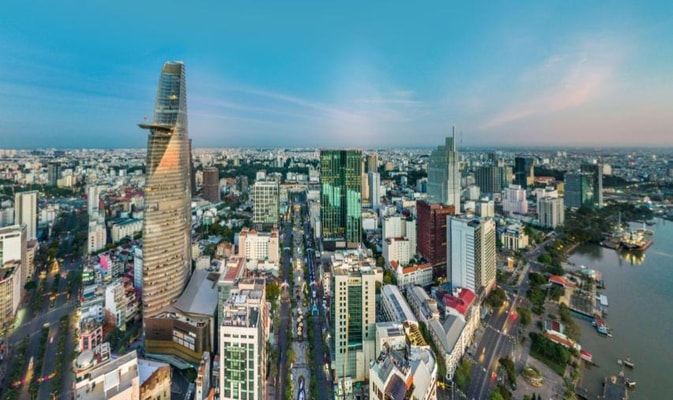The Strong Case for Investing in Vietnam

22 JUN, 2022
By Quynh Le Yen

Last year the Lego Group announced Vietnam as the home for its for its first carbon neutral factory with an investment of over US$1bn and the creation of up to 4,000 jobs. Lego is just one of many MNCs recognising Vietnam’s potential, alongside a huge increase in investors who see the country as a major opportunity for growth.

Despite the global problems faced during the pandemic, Vietnam received $20bn of foreign direct investment (“FDI”) flows in both 2020 and 2021 – reflecting “Vietnam’s exceptional handling of Covid-19, which has included proactive management of health policy, fiscal stimulus, and monetary policy, combined with supply chain shift”, according to the US Department of State.
And FDI is showing no signs of abating, with total disbursement of $8.0bn for the year to end-of-May 2022, up +7.8% year-on-year.
Research published in February 2022 by Dragon Capital reveals 52% of European institutional investors and wealth managers with $520 billion in assets under management plan to increase their allocations to Vietnam or invest for the first time. This reflects the myriad of economic, social and ESG benefits the country offers.
Resilient Economic Expansion
Vietnam’s post-pandemic recovery is exhibiting strong momentum. The country enjoyed GDP growth of 5% in 1Q22 and is projected to hit 7% for the whole year. Vietnam's three main economic drivers will be domestic consumption, global value chain integration, and government infrastructure investment.
Free trade
The country’s participation in free trade agreements supports its ambition to shift from exporting labour-intensive manufacturing products and primary goods to more complex high-tech goods like electronics, machinery, vehicles, and medical equipment. In recent years, Vietnam signed the EU-Vietnam Free Trade Agreement; the UK-Vietnam Free Trade Agreement; the Regional Comprehensive Economic Partnership; and the Comprehensive and Progressive Agreement for Trans-Pacific (CPTPP).
As a result, in 2021, Vietnam recorded total trade of $668.5bn, +22.6% year on year, equivalent to 190% of GDP, among the highest globally. Electronic devices and parts contributed roughly 32.2% of total export in 2021, compared to 2.2% when Vietnam joined the WTO in 2006. Today, made-in-Vietnam phones account for 20% of total worldwide sales.
ESG credentials
The Vietnamese government committed to achieving net zero carbon emissions by 2050, meaning a significant transition from fossil fuels to green energy, considerable development of its digital capability and a concerted effort to protect biodiversity.
The Ministry of Industry and Trade forecasts it needs $128.3bn to develop Vietnam’s electricity industry over the next eight years, in addition to the $35bn required to transform the country’s digital landscape, which the World Bank says will deliver $200 billion by 2045.
This represents clear investment opportunities for those with an ESG-focused agenda.
Attractive demographics
Vietnam’s current workforce is 55 million people, about half are 15 to 39 years old. While workers' skills and expertise have gradually improved through on-the-job training programs and the vocational education system, average wages remain much lower than regional peers, and is only about 26% of China's.
The 96-million-person country is also massive consumer market, with a middle-class of around 30 million individuals averaging roughly $7,800 in annual income. Significant foreign investment, infrastructure spending and urbanisation will help this segment grow at an expected rate of 8-10% annually in the next decade.
Good value
Current Vietnamese equity valuations are an attractive 9.5x4 on forward price-to-earnings ratio, while earnings per share (EPS) growth is forecast at over 20% this year. In the first quarter of 2022, the top 80 companies in Dragon’s research coverage achieved EPS growth of 27%, in 2021 the overall average was around 38%. Meanwhile daily turnover in Vietnam typically exceeds US$1bn, more liquid than most of Vietnam’s peers.
All this helps explain why 85% of investors responding to this February’s Dragon Capital survey believe frontier markets offer some of the best opportunities to find hidden gems in the investment management world.
The future
S&P Global Ratings upgraded Vietnam’s sovereign credit rating to BB+, outlook “Stable” on the back of the country’s political stability and economic growth. The government targets an MSCI upgrade from frontier to emerging market status by 2025, with work underway to satisfy the outstanding criteria. While accession isn’t guaranteed, the strong macro picture and positive micro-outlook make Vietnam one of the world’s most promising investment success stories.
Another key driver is the impact rising incomes have on the population’s appetite to invest in their stock market. The number of new trading accounts opened in the last two years exceeds the total since the stock market launched in 2000. Nevertheless, penetration remains modest, at slightly above 5% of the population in comparison to 50 – 80% in more developed Asian markets such as Korea and Taiwan. This dynamic domestic wealth creation will continue to support the market, making Vietnam less dependent on foreign indirect investment flow.


